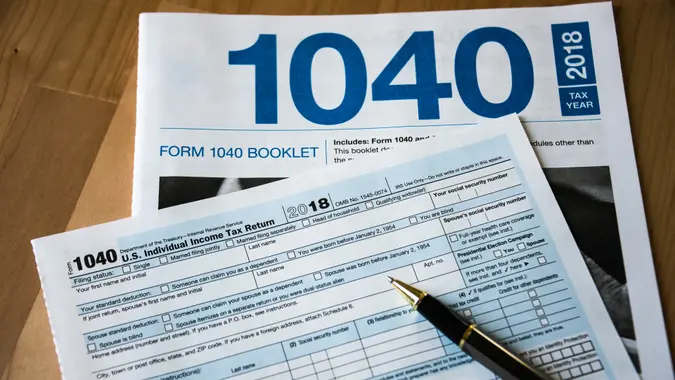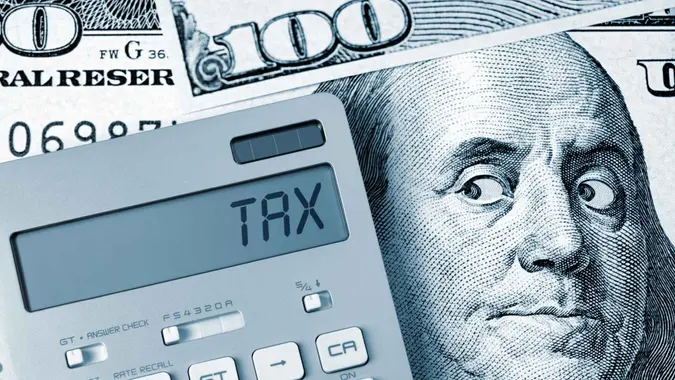How Permanent Tax Extensions Passed in 2017 Could Shape Your 2026 Tax Planning

Commitment to Our Readers
GOBankingRates' editorial team is committed to bringing you unbiased reviews and information. We use data-driven methodologies to evaluate financial products and services - our reviews and ratings are not influenced by advertisers. You can read more about our editorial guidelines and our products and services review methodology.

20 Years
Helping You Live Richer

Reviewed
by Experts

Trusted by
Millions of Readers
The 2017 Tax Cuts and Jobs Act (TCJA) introduced sweeping changes to the U.S. tax code, many of which were set to expire after 2025. However, the new law has made several of those key provisions permanent. That means taxpayers can plan for the long term with more confidence.
From income tax brackets to deductions and credits, here’s how some of these changes could shape your 2026 tax planning and beyond.
What’s Been Made Permanent
Several major provisions from the TCJA have been made permanent or extended under the One Big Beautiful Bill (OBBB), creating new opportunities for long-term tax planning that will take effect starting in 2025.
Here are some key extensions:
- Income tax brackets: The TCJA’s lower rates are now permanent, ranging from 10% to 37%.
- Standard deduction: It was raised to $15,750 for single filers and $31,500 for joint filers.
- Adjusted gross income (AGI) limits for charitable giving: Taxpayers can continue to deduct cash donations up to 60% of their adjusted gross income.
- Estate and gift tax exemption: It was increased to $15 million in 2026, exempting most estates from federal tax.
- Child tax credit: Made permanent the increased amount and income requirements from the TCJA.
These updates provide greater certainty for taxpayers and a stronger incentive to plan ahead.
Plan Around Tax Brackets
Beginning in the 2025 tax year, the income tax brackets established under the TCJA are now permanent. The seven brackets are 10%, 12%, 22%, 24%, 32%, 35% and 37%.
For taxpayers, this provides more predictability. Stable marginal rates make it easier to plan moves, such as doing Roth conversions, capital gains harvesting and managing self-employment income. It also opens the door to multiyear tax strategies that carry through 2026 and beyond.
Leverage the Standard Deduction
The OBBB also preserves the higher standard deduction established by the TCJA and increases it slightly, raising it to $15,750 for single filers and $31,500 for joint filers starting in 2025. These amounts will also be adjusted for inflation in future years.
With this higher standard deduction now permanent, most taxpayers won’t need to itemize. However, that doesn’t mean recordkeeping isn’t important. Tracking charitable contributions and other deductible expenses in 2025 may help taxpayers maximize their benefits in 2026, particularly with provisions that allow certain deductions even when claiming the standard deduction.
Claim the Child Tax Credit
The TCJA expanded the Child Tax Credit, increasing it from $1,000 to $2,000 per qualifying child and raising the income thresholds for eligibility. These changes, made permanent under the new law, allow more families to qualify for the credit.
This credit directly reduces taxes owed, making it one of the most valuable planning tools for households with children. Keeping income below the phaseout threshold can help families claim the full credit each year.
Maximize Charitable Giving
The new law makes permanent the ability to deduct cash contributions to qualified charities up to 60% of AGI. This provides taxpayers with more flexibility to make larger gifts in a single year without exceeding the deduction limits.
“Take advantage of charitable giving,” said Nadia Rodriguez, a TurboTax spokesperson. “Beginning in 2026, charitable donations will be deductible even if you take the standard deduction, up to $1,000 for single filers or $2,000 for married couples filing jointly.”
And you’ll want to plan ahead. “It will be helpful to save those receipts and keep detailed records of any charitable contributions made,” she said.
Editor’s note on political coverage: GOBankingRates is nonpartisan and strives to cover all aspects of the economy objectively and present balanced reports on politically focused finance stories. You can find more coverage of this topic on GOBankingRates.com.
More From GOBankingRates
 Written by
Written by  Edited by
Edited by 

























